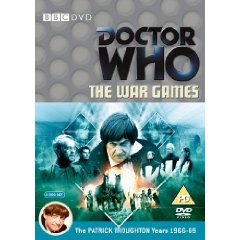Doctor Who’s The War Games: how on screen fighting has changed
 Developments in computer-based special effects frequently get the most attention, but having just finished watching The War Games, a ten part Doctor Who story from 1969, what really strikes me is how much more convincing physical fight scenes are in current shows and films.
Developments in computer-based special effects frequently get the most attention, but having just finished watching The War Games, a ten part Doctor Who story from 1969, what really strikes me is how much more convincing physical fight scenes are in current shows and films.
This isn’t a matter of blood and gore, but rather the way that punches really do look like they land, people fall as you’d expect them to do so and at the right moment, and so on. Although The War Games is in many ways an excellent production, the fight scenes in it seem mannered and staged by comparison with what we’re now used to.
A similar show now would certainly use more special effects, and that would add a little to the story, but the real impact would be on the fight scenes. Given that’s an issue of human skill rather than technological development, it’s an impressive testament to those who have moved the art on so much.
There are two other past habits of TV production with The War Games highlights. First, there is the “I’m going to hide in plain sight but you can’t see me because I’ve said I’m hiding” tactic. It’s deployed several times in The War Games, for example when Patrick Troughton’s Doctor Who hides behind a plastic screen, cunningly putting his head right in front of a transparent part. But it’s OK. He’s said he’s hiding. So he can’t be seen, right?
Second, there is the “I’ve got a gun and I’m going to stand in the middle of the corridor because people shooting at me isn’t any reason to get out of the way, is it?”. This is by no means unique to Doctor Who, and hung around for much longer. You often see it in episodes of Blake’s Seven for example.
For me these quirks are to the charm of the story, which anyway has a darn good plot to keep things moving through all ten episodes, even when you watch several of them back-to-back rather than spread out with a week in between as nature intended.
The War Games on DVD is available from Amazon here.
(Thanks, by the way, to Alex Wilcock for his excellent review which put me on to the story.)
Careful Pink Dog, watch too much of that stuff and you may grow tusks and a trunk!
Better fight scenes have more to do with technological development than you acknowledge. A convincing fight scene will use fast camera movement and tight editing to create the illusion. In the BBC of the 1960s, TV cameras were bulky and slow-moving, and editing facilities were limited. Some directors shot fight scenes on film rather than video for this very reason (see the final episode of “An Unearthly Child” for an example), but this posed problems of its own, both in terms of cost and in the mismatch of visual texture between video and film.
Of course, using any given technology the skill of the director, fight arranger and performers will always make a difference – but the technology puts real constraints on how good the end result can be.
That’s interesting Iain; thanks.
interesting post, much of what you say is very informal and could help a lot of people